
The Museum of New Zealand Te Papa Tongarewa is New Zealand's national museum and is located in Wellington. Usually known as Te Papa, it opened in 1998 after the merging of the National Museum of New Zealand and the National Art Gallery. An average of more than 1.1 million people visit every year, making it the 58th-most-visited art gallery in the world in 2023. Te Papa operates under a bicultural philosophy, and emphasises the living stories behind its cultural treasures.

The upland moa is an extinct species of moa that was endemic to New Zealand. The species was named by Richard Owen in 1883, and belongs to the ratites, a group of flightless birds with no keel on the sternum. Of all moa species, Megalapteryx didinus has the best-preserved specimens, which occasionally also show impressions of soft tissue. The upland moa lived on the South Island of New Zealand, and was predominantly found in alpine and sub-alpine environment where it fed on flowers, herbs and other vegetation. After the Māori arrived in New Zealand and started hunting it, the species went extinct around 1500 CE. It was the last remaining moa species.

A gingersnap, ginger snap, ginger nut, or ginger biscuit is a biscuit flavoured with ginger. Ginger snaps are flavoured with powdered ginger and a variety of other spices, most commonly cinnamon, molasses and clove. There are many recipes. The brittle ginger nut style is a commercial version of the traditional fairings once made for market fairs now represented only by the Cornish fairing.
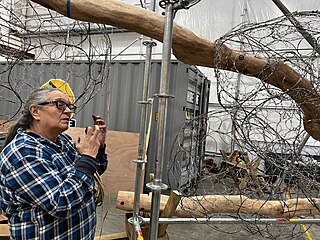
Shona Rapira Davies is a New Zealand sculptor and painter of Ngātiwai ki Aotea tribal descent currently residing in Wellington, New Zealand.
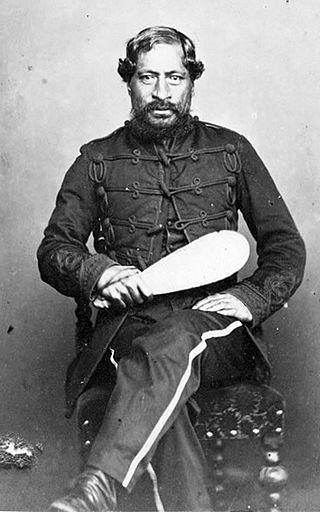
A patu is a club or pounder used by the Māori. The word patu in the Māori language means to strike, hit, beat, kill or subdue.

Arnott's Group is an Australian producer of biscuits and snack food. Founded in 1865 by William Arnott, they are the largest producer of biscuits in Australia and a subsidiary of KKR.

Māori traditional textiles are the indigenous textiles of the Māori people of New Zealand. The organisation Te Roopu Raranga Whatu o Aotearoa, the national Māori weavers' collective, aims to preserve and foster the skills of making and using these materials.

The pūtātara is a type of trumpet used by the Māori people of New Zealand. It is customarily made with a carved wooden mouthpiece and a bell made from New Zealand's small native conch shells or triton shell. Larger pūtātara were particularly prized as the triton shell was rarely found and only sometimes washed up on the beaches in the Far North. It is often blown in guest welcoming ceremonies.

Hawaiian feather helmets, known as mahiole in the Hawaiian language, were worn with feather cloaks. These were symbols of the highest rank reserved for the men of the aliʻi, the chiefly class of Hawaii. There are examples of this traditional headgear in museums around the world. At least sixteen of these helmets were collected during the voyages of Captain Cook. These helmets are made from a woven frame structure decorated with bird feathers and are examples of fine featherwork techniques. One of these helmets was included in a painting of Cook's death by Johann Zoffany.
Patricia Charlotte Perrin was a New Zealand potter. She was born in Auckland, New Zealand on 11 July 1921 and died at Auckland Hospital on 12 November 1988.
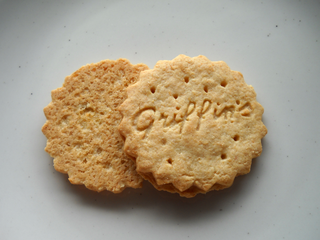
The Krispie is a toasted coconut biscuit made by Griffin's Foods of New Zealand.
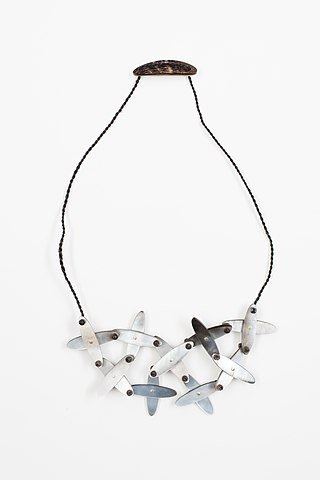
Alan Chris Preston is a New Zealand jeweller. His work has been exhibited widely in New Zealand and internationally, and is held in major public collections in New Zealand.
Lyonel Grant is a New Zealand Māori master carver and sculptor. Born in Rotorua, he affiliates to Ngāti Pikiao and Te Arawa. Grant identifies as Maori Indian.
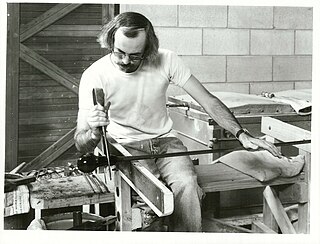
Tony Kuepfer is an American-New Zealand glass artist.
Garnet Campbell "Garth" Chester was a New Zealand furniture designer.

Dame Robin Adair White is a New Zealand painter and printmaker, recognised as a key figure in the regionalist movement of 20th-century New Zealand art.

Rongomaraeroa is the marae of the Museum of New Zealand Te Papa Tongarewa and incorporates a contemporary wharenuiTe Hono ki Hawaiki. It is located on the museum's 4th floor overlooking Wellington harbour, and was officially opened on 30 November 1997.

Pounamu is a term for several types of hard and durable stone found in the South Island of New Zealand. They are highly valued in New Zealand, and carvings made from pounamu play an important role in Māori culture.















